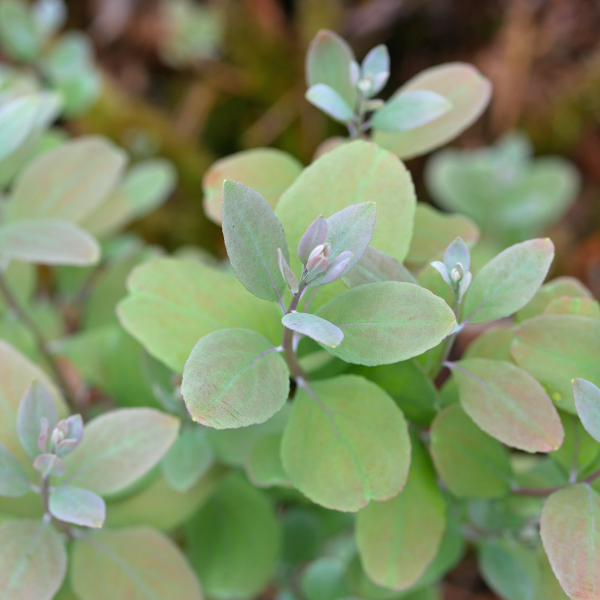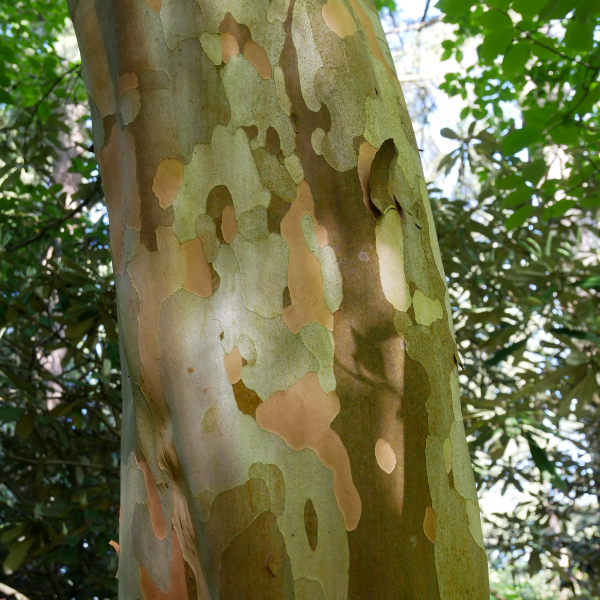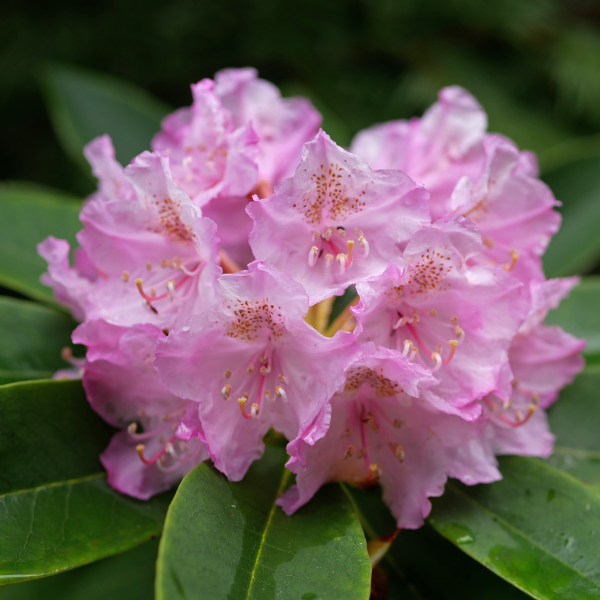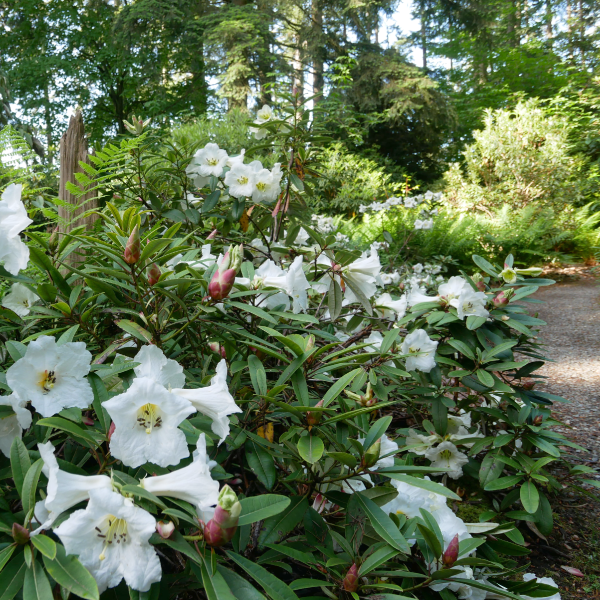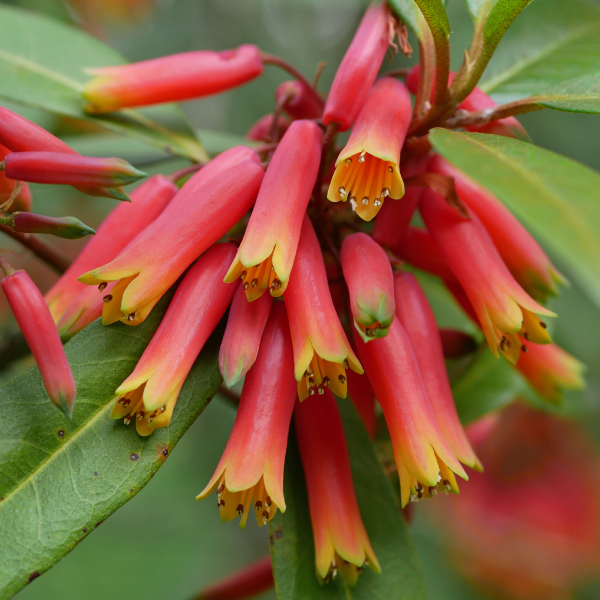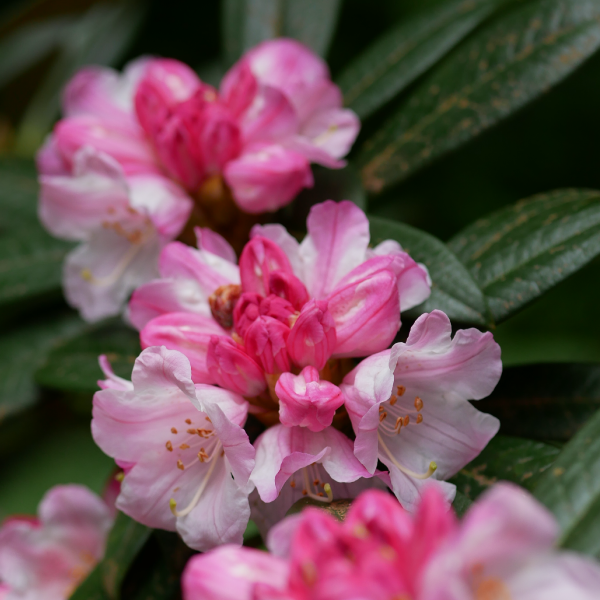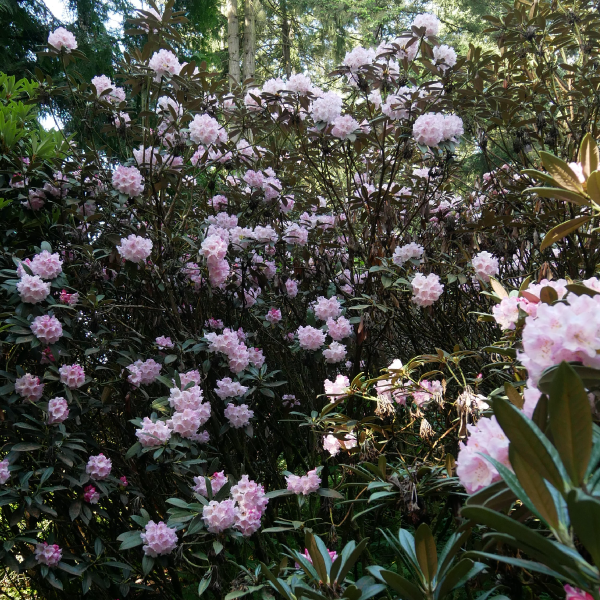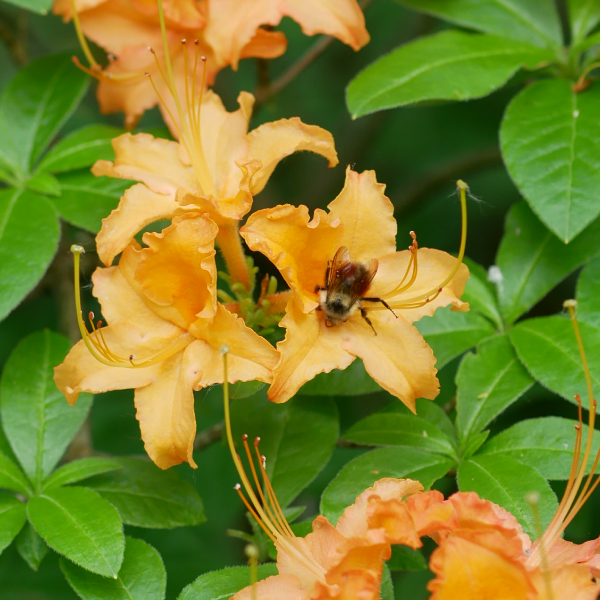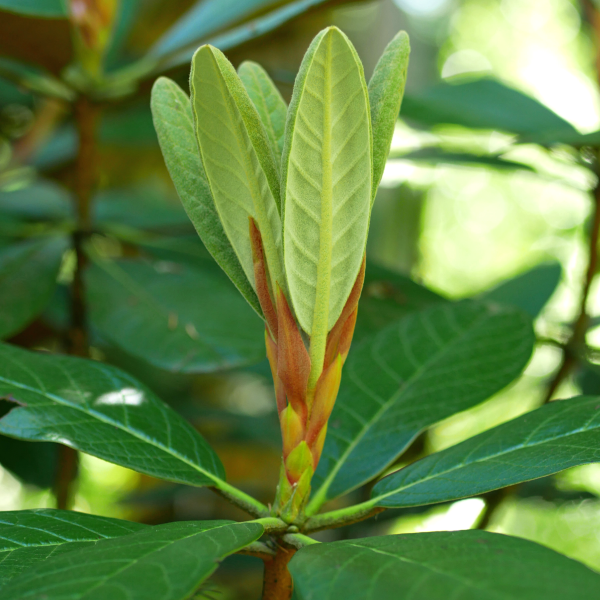June
Story and photos by Will Clausen
June is a month of transition in the garden. Even though peak flowering has passed for rhododendrons, there are still plenty of species that put on their show at this time of year, and a few that will wait for an even later date. And of course, we have plenty of other plants in the garden in addition to rhododendrons, and lots of these bloom throughout the summer. So, even as we say goodbye to spring, the garden still has plenty to offer and is worth a visit to see.
Azaleas From the Visitor Center, head toward the sprawling big leaf maple, Acer macrophyllum, just west of the Conservatory. Here, a mass of different evergreen azaleas crowd in together. May and June bring a lot of color to this area from the different forms of Rhododendron kiasuanum among others. Moving downhill into the Azalea Collection, you will see that the first wave of azaleas has finished but there will still be good color from a few different species including the vibrant orange R. calendulaceum, whose common name flame azalea offers a pretty good depiction. Also blooming early in the month is R. eastmanii, a fragrant flower that is white but tinged pink and with a faint yellow blotch. Later in the month look for R. prunifolium and R. cumberlandense, both with bolder red to orange flowers. The variable and extremely showy western azalea, R. occidentale, is blooming now as well. Other highlights in this part of the garden in June are the Kalmia latifolia, mountain laurel, which will be in bloom, and the dusty silver-blue new leaves on Zenobia pulverulenta, honeycup, which is completely unique and hard to miss. Also check for massive white flowers on the bigleaf magnolia, Magnolia macrophylla, at the far end of the Azalea Collection.
Upper Garden Follow the side trails that snake through the upper garden. Here you can find a noteworthy plant that would be easily overlooked. Rhododendron smokianum is a recently described species that is found in the wild along rocky ridgelines in the Great Smoky Mountains along the North Carolina and Tennessee border. Our plants are still very young but already flowering. Another oddity found here is R. chapmanii, a broadleaf evergreen rhododendron that grows in the wild in Florida. Along the path, you will find several different species of Stewartia that bloom through June with white flowers reminiscent of Camellia, to which they are closely related. We have a number of Stewartia pseudocamellia in particular. These trees have outstanding bark which peels as the tree ages to create a patchwork of colors as the green outer bark falls off and reveals earthy clay colors underneath. Coming into the Meconopsis Glade, enjoy the final few flowers of the blue poppies, Meconopsis ‘Lingholm’. These plants are at their peak in mid to late May, but scattered flowering usually continues on into early and sometime mid-June. This is a great spot to see our native pacific rhododendron, R. macrophyllum, which is blooming profusely this year. Just a few steps down the path you will find Hydrangea angustipetala ‘Golden Crane’, an unusual and beautiful hydrangea. Heading farther down the path, you will come to a grove of tall and lanky plants laden with red-orange tubular flowers hanging from the branches. This is R. keysii, a late blooming hummingbird magnet. Keep an eye and an ear out for these territorial little birds. Across the trail, look for the large white flowers of R. decorum ssp. diaprepes.
Pond Heading downhill toward the Pond, take the smaller side trail near the towering climbing hydrangea. Down at the bottom of this path, bend down and stick your nose into the large white flowers of R. lilliiflorum to enjoy a sweet scent. A stand of giant Himalayan lilies, Cardiocrinum giganteum, has stalks shooting up and will be flowering later in the month. An old thicket of two species from subsection Irrorata makes a wall of rhododendron in this area. Early in the month, you can marvel at the pink and white candy-stripped flowers of R. insigne, and later in the month look for flowers on R. thayerianum.
From here, wander the garden enjoying the sights of early summer. Don’t forget to also take in the new growth that is emerging on most of the rhododendrons now. Through the Lower and Upper Woodland Garden in particular you can see these beautiful tender leaves on species from subsection Grandia and Falconera such as R. arizelum, R. falconeri, R. montroseanum, and R. sinogrande, among many others. Feel free to gently touch any of these that can be reached from the trail. It is really amazing to see and feel these fuzzy new leaves and think about the big job they have ahead of them.
- Zenobia pulverulenta
- Stewartia pseudocamellia
- R. macrophyllum
- R. lilliiflorum
- R. keysii
- R. insigne
- R. insigne
- R. calendulaceum
- R. arizelum

